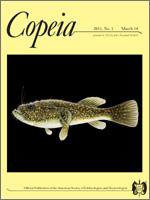We determined whether Eleutherodactylus coqui exhibits clinal variation in male advertisement call parameters across its native Puerto Rico and introduced range of Hawaii. In the laboratory, we determined whether clinal variation in call parameters were a result of body size or temperature. Calls correlate with elevation in both Puerto Rico and Hawaii in the following ways: negative for fundamental frequency of each call syllable (Co and Qui), positive with the duration of each call, negative with call rate (calls per minute), and no relationship with call intensity. In the laboratory, we found the negative relationship between elevation and call frequency was best explained by larger body sizes at higher elevations, and that the positive and negative relationships between elevation and call duration, and elevation and call rate, respectively, were best explained by lower temperatures at higher elevations. While frogs in Hawaii exhibited the same relationships between elevation and call parameters found in Puerto Rico, they exhibited less variation in call frequency with elevation because they had less variation in body size. Differences in call duration and rate between Hawaii and Puerto Rico reflected lower temperatures in Hawaii at similar elevations. While individual frogs are not louder in Hawaii, choruses may appear louder where densities are higher.
How to translate text using browser tools
14 March 2011
Clinal Variation in Calls of Native and Introduced Populations of Eleutherodactylus coqui
Eric M O'Neill,
Karen H Beard
ACCESS THE FULL ARTICLE





